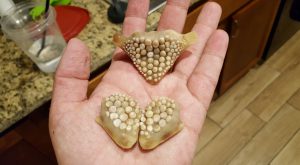their mouths, freshwater drums have flat, molar-like teeth in their throats to crush hard-shelled prey like clams and snails. These teeth often resemble coral or mosaics, making them easily mistaken for ancient relics.
Though freshwater drums typically live in lakes and rivers, they can survive in brackish water. It’s likely this specimen was carried to shore by tides or ocean currents.

The find highlights one of nature’s more fascinating adaptations and serves as a reminder: not everything strange on the beach is ancient—some of it just shows how clever evolution can be.


